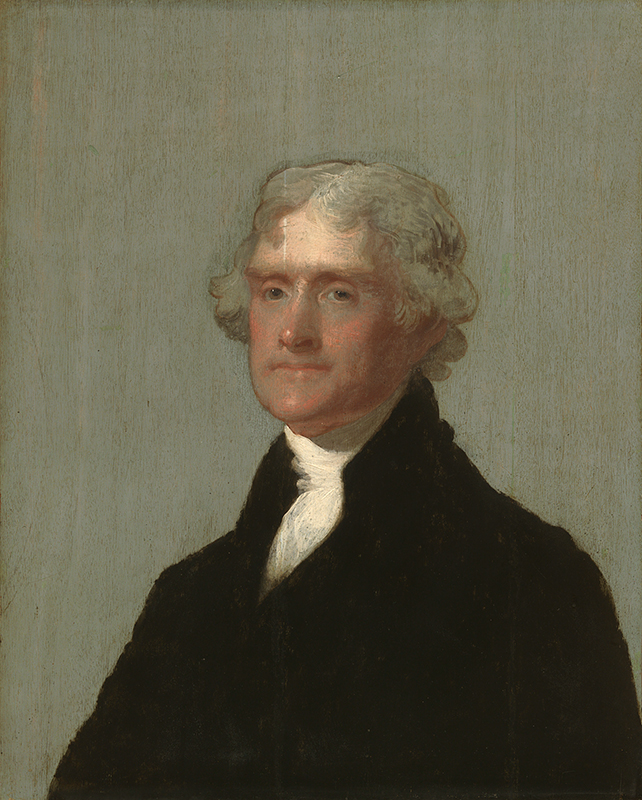Thomas Jefferson,“The Edgehill Portrait” (1743–1826)

Thomas Jefferson authored the Declaration of Independence, founded the University of Virginia, and wrote Virginia’s Statute for Religious Freedom. He was also a philosopher, inventor, gentleman farmer, and scientist. During his presidency, the nation bought a vast land holding west of the Mississippi River. Known as the Louisiana Purchase, this acquisition from France doubled the size of the United States and led to the remarkable findings of the Lewis and Clark Expedition (1804–1806). Although Jefferson once called slavery “an abominable crime,” he consistently enslaved African Americans, including his late wife Martha’s half-sister, Sally Hemings, with whom he had several children.
Known as the “Edgehill Portrait,” this painting on mahogany, by artist Gilbert Stuart, was the result of two sittings. Jefferson’s brightly lit forehead stands out against the muted gray-green background, as if to emphasize his bold intellect.
- How is the artist using light and shadow in this portrait? What do these convey?
- Most paintings are made on a stretched canvas…this one is made on wood. What differences can you see?
- Compare this portrait by Gilbert Stuart to Stuart’s Lansdowne portrait of George Washington. What similarities and differences do you see? In what ways did Stuart convey the personalities of Washington and Jefferson?